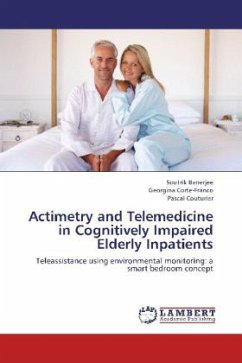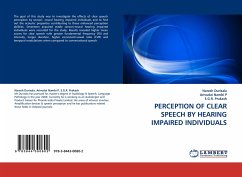
Actimetry and Telemedicine in Cognitively Impaired Elderly Inpatients
Teleassistance using environmental monitoring: a smart bedroom concept
Versandkostenfrei!
Versandfertig in 6-10 Tagen
39,99 €
inkl. MwSt.

PAYBACK Punkte
20 °P sammeln!
This book describes the development of a teleassistance system (GARDIEN, which stands for Gérontologie Assistée par la Recherche et le Diagnostic des Incidents et des Errances Nocturnes) as a method of monitoring elderly hospitalised patients in a passive manner. The analyses of patient clinical data helped to identify the key predictive factors of nocturnal activity. The modelling of nocturnal behaviour typically presents 4 types of patients: stable, acute paroxysmal nocturnal agitation, chronic nocturnal hyperactivity and acute-on-chronic nocturnal activity. An important aspect of the stud...
This book describes the development of a teleassistance system (GARDIEN, which stands for Gérontologie Assistée par la Recherche et le Diagnostic des Incidents et des Errances Nocturnes) as a method of monitoring elderly hospitalised patients in a passive manner. The analyses of patient clinical data helped to identify the key predictive factors of nocturnal activity. The modelling of nocturnal behaviour typically presents 4 types of patients: stable, acute paroxysmal nocturnal agitation, chronic nocturnal hyperactivity and acute-on-chronic nocturnal activity. An important aspect of the study was to develop an algorithm to identify automatically the incidence of nocturnal agitation in the elderly hospitalised patients. Finally, we developed a questionnaire to evaluate the acceptability of teleassistance systems among the patients and their family.












